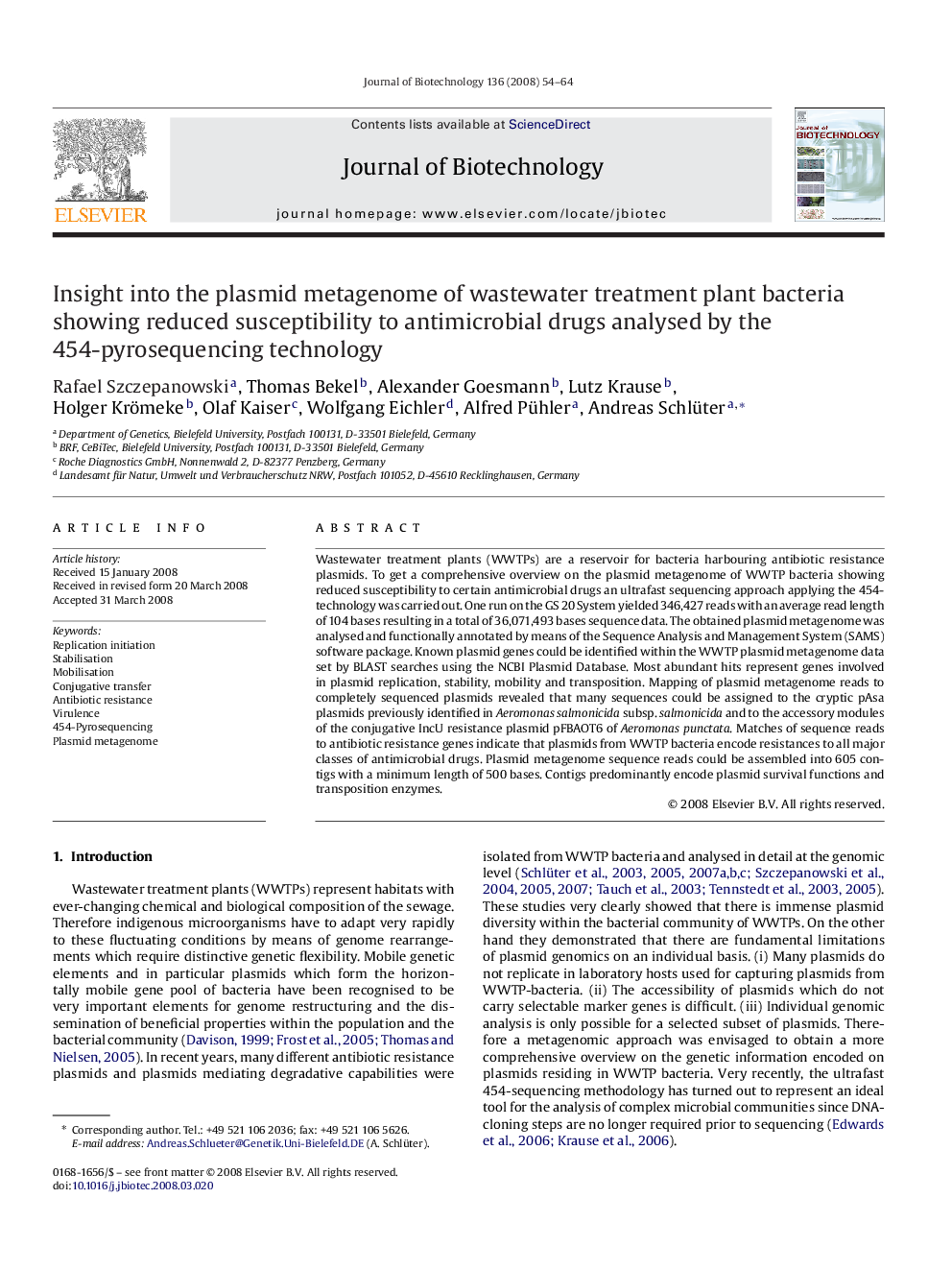| Article ID | Journal | Published Year | Pages | File Type |
|---|---|---|---|---|
| 24560 | Journal of Biotechnology | 2008 | 11 Pages |
Wastewater treatment plants (WWTPs) are a reservoir for bacteria harbouring antibiotic resistance plasmids. To get a comprehensive overview on the plasmid metagenome of WWTP bacteria showing reduced susceptibility to certain antimicrobial drugs an ultrafast sequencing approach applying the 454-technology was carried out. One run on the GS 20 System yielded 346,427 reads with an average read length of 104 bases resulting in a total of 36,071,493 bases sequence data. The obtained plasmid metagenome was analysed and functionally annotated by means of the Sequence Analysis and Management System (SAMS) software package. Known plasmid genes could be identified within the WWTP plasmid metagenome data set by BLAST searches using the NCBI Plasmid Database. Most abundant hits represent genes involved in plasmid replication, stability, mobility and transposition. Mapping of plasmid metagenome reads to completely sequenced plasmids revealed that many sequences could be assigned to the cryptic pAsa plasmids previously identified in Aeromonas salmonicida subsp. salmonicida and to the accessory modules of the conjugative IncU resistance plasmid pFBAOT6 of Aeromonas punctata. Matches of sequence reads to antibiotic resistance genes indicate that plasmids from WWTP bacteria encode resistances to all major classes of antimicrobial drugs. Plasmid metagenome sequence reads could be assembled into 605 contigs with a minimum length of 500 bases. Contigs predominantly encode plasmid survival functions and transposition enzymes.
